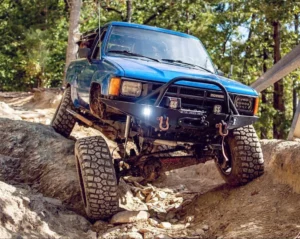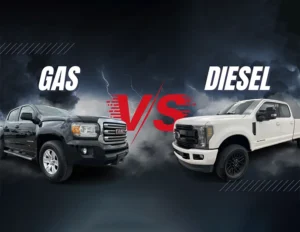In the world of off-road enthusiasts, vehicle modification is a stage every player goes through. But with so many parts on the market, which ones are truly worth investing in to improve practical performance? In this article, we list ten off-road upgrades we believe are the most worthwhile to install. These parts significantly enhance vehicle performance, safety, and off-road capability.
1. Bull Bar
First up is the bull bar on the front of the off-road vehicle, also known as the nudge bar. Why is this so important? When driving off-road, you are usually in wild areas where animals are around. If animals suddenly cross in front of your vehicle, they might hit your car. At this time, you need the bull bar to protect you.
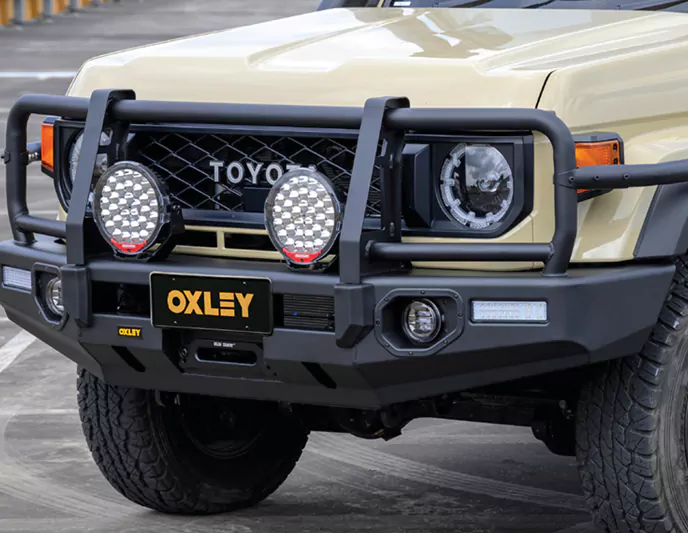
Usually, when driving off-road at speed, if animals cross the road and you hit them without a bull bar, your plastic front parts can’t withstand the impact. Small animals are one thing, but if it’s a large animal like a kangaroo, your radiator and engine could get damaged. Minor damage means repairs, but worse cases could require towing or total write-off. It also affects the safety of occupants.
So, the bull bar is a must-have.
Secondly, installing a bull bar increases your approach angle, which provides extra protection by making it harder to scrape the ground. The factory plastic bumper usually has very low ground clearance. With a bull bar, your clearance immediately improves, so when you climb or descend steep slopes, you’re less likely to scrape the front. Even if you do, the bull bar is strong and offers good protection.
Third, the bull bar allows you to install more aftermarket parts, such as winches, lights, and antennas, which factory plastic bumpers usually cannot accommodate.
2. Snorkel and Extended Breathers
If you often cross rivers or water, you definitely need snorkels and extended breathers.
These include extended breathers for front and rear differentials, transmission, and transfer case. We recommend connecting all four.

How deep the water should be before installing? For differentials, the breather should be about halfway up the tire. If you frequently cross water deeper than half the tire height, install the snorkel breather. Transmission and transfer case breathers are slightly higher, but differentials are the most critical due to their low position.
Most vehicles’ differential breathers are only about half the tire height. Driving through deeper water without snorkels is very unsafe and could cause water intake.
The snorkel protects the engine’s air intake during water crossings. If water rises above the hood, water may enter the engine. Raising the snorkel to the roof level effectively prevents this, so theoretically, water reaching this height should pose no problem.
Also, a higher snorkel reduces dust intake since the intake is raised away from ground-level dust, which is helpful when driving on dusty or sandy roads.
So, snorkels and extended breathers are essential not only for water crossings but also for dusty environments.
3. Recovery Points
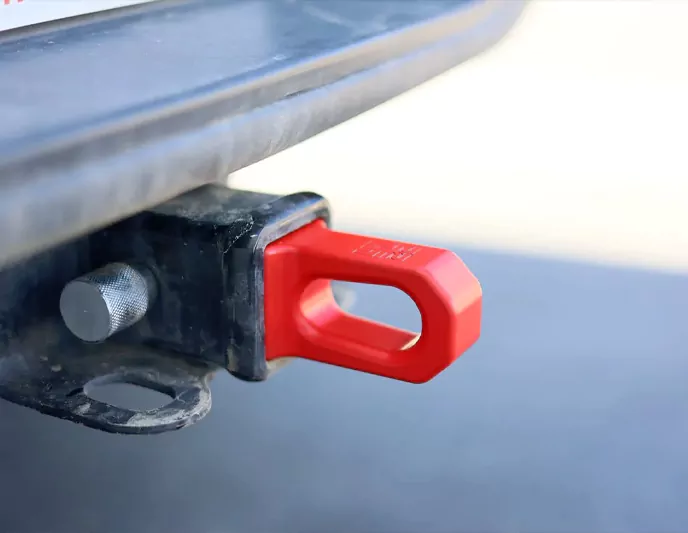
Recovery points are extremely important and every off-road vehicle should have at least one.
If you have a tow bar, you should be able to replace the tow ball with a tow hook. Tow balls and tow hooks have very different structures — tow balls are solid, tow hooks are hollow, and the strength differs greatly. You cannot use a tow ball to directly attach a tow rope for recovery; this is dangerous. It could damage the tow ball or the hook might pop off, potentially injuring someone.
So recovery points are very important for safe recovery operations. Having two is best, but at least one is necessary.
This is convenient not only for you to recover others but also for others to recover you in the wild.
4. Suspension
The fourth important upgrade is suspension. Why? Raising your suspension lets you fit larger tires and lifts the whole vehicle, reducing the chance of scraping the chassis, providing extra protection. It also improves your vehicle’s clearance and off-road capability.
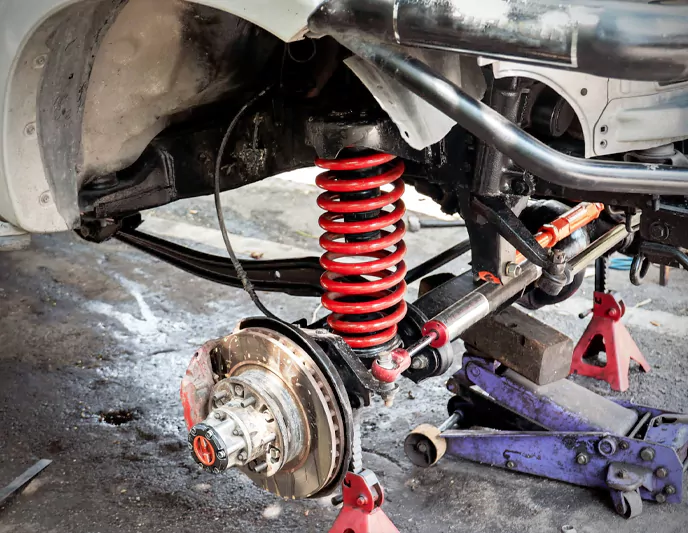
Suspension is a very important modification.
Some may ask: is a 2-inch or 3-inch lift better, or should it be 4 or 5 inches? As previously discussed in other shows, I think 2 inches already satisfy over 80% of users.
If you are passionate about rock crawling or hard-core off-roading, you can opt for 3, 4, or even 5 inches to fit bigger tires.
But such big lifts noticeably reduce power, handling on regular roads, and are very costly because many parts need replacement.
Honestly, for off-road performance, adding a locker (like a rear locker) can have a more noticeable effect than just suspension lift.
5. Tire Upgrade
The fifth upgrade is tires. Upgrading tires allows you to choose larger sizes, including MT (Mud Terrain) or AT (All Terrain). Changing tires dramatically improves off-road performance, especially if you choose bigger tires with smaller rims, which means thicker sidewalls.
This lets you run lower tire pressures, which is very beneficial when doing challenging off-road driving.
6. Communication Equipment
The sixth essential upgrade is communication equipment. No matter what, you need some form of communication device.

We list communication as a modification because it’s crucial. When off-roading, people usually go in groups. Maintaining good communication is fundamental for safety.
This includes coordinating convoy driving and rescue operations via radio communication.
For example, handheld radios have limited range and less stable signal; a vehicle-mounted radio offers better range and stability.
We recommend both vehicle radios and handheld radios for frequent off-roaders. In an emergency, your companions can get out and guide you with handheld radios while you stay in your vehicle communicating with your vehicle radio.
7. Off-road Winch
Seventh is the winch. Some may say it’s not that important, so let me explain.
If you go off-roading with a group, one vehicle with a winch in the convoy is enough.
But if you usually go alone or travel solo, your vehicle must have a winch.
A winch is an effective recovery tool when you get stuck. It can rescue others and yourself with ease.
So winches are a very important modification.
Again, for group trips, one vehicle having a winch suffices, but for solo adventurers, we strongly recommend installing your own winch.
8. Tire Inflation and Deflation System
The eighth important upgrade is a tire inflation and deflation system, which is not expensive.
Why is this important? Because off-road vehicles face varied terrains where you must adjust tire pressures accordingly — sometimes you need to lower pressure, sometimes add air.
A good inflation/deflation system is very useful.
We suggest finding the right tire pressures for your vehicle during off-roading, since tire pressure relates to vehicle weight, and front and rear weights often differ, meaning front and rear tires may require different pressures, especially on pickups.
9. Roof Rack
Ninth is the roof rack. It might surprise you, but roof racks are not just for carrying gear on top.
They also let you mount many aftermarket parts like shovels, spades, and solar panels.
Without a roof rack, it’s hard to find a suitable place for such gear.
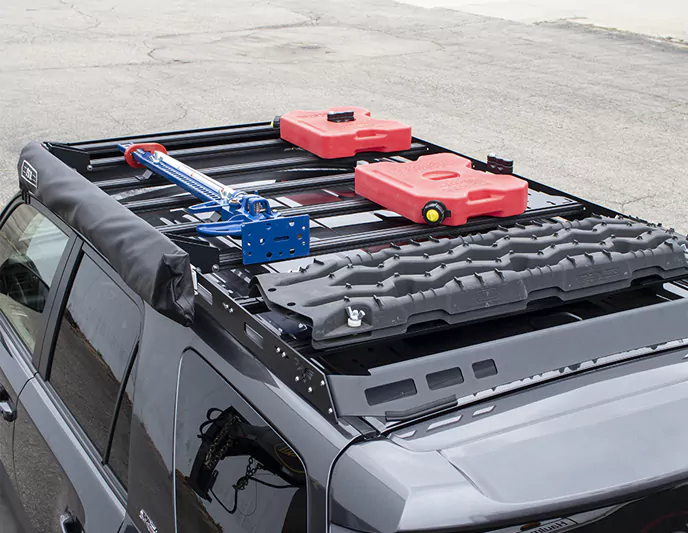
Don’t underestimate roof racks. You don’t only use them for boxes or luggage; sometimes they hold other upgrades to avoid drilling holes on the roof, which protects your vehicle’s integrity.
Therefore, roof racks are a very important modification.
10. Recovery Gear
Finally, the tenth item is recovery gear. Why is it important? Safety, safety, safety — safety comes first when you’re outdoors.
Recovery gear can help you out of tight spots with just a bit of effort. This includes sand mats, shovels, recovery ropes, shackles, hooks, and more.
We won’t list all of them here, but these tools are essential in emergencies.
Conclusion
These are the ten practical off-road upgrades we recommend. They not only significantly improve your vehicle’s performance and safety but also make your adventures more confident and reliable. Of course, off-road modifications are not one-size-fits-all and should be customized based on terrain, driving habits, and vehicle characteristics.
If you have your own must-have list, feel free to share in the comments below.
As a professional manufacturer of differential lockers, we understand how crucial a high-quality mechanical locker is to improving off-road capability. If you’re looking for reliable differential upgrade solutions, please visit our product page or contact us directly for fitment advice. We welcome your inquiries for customized support anytime!


